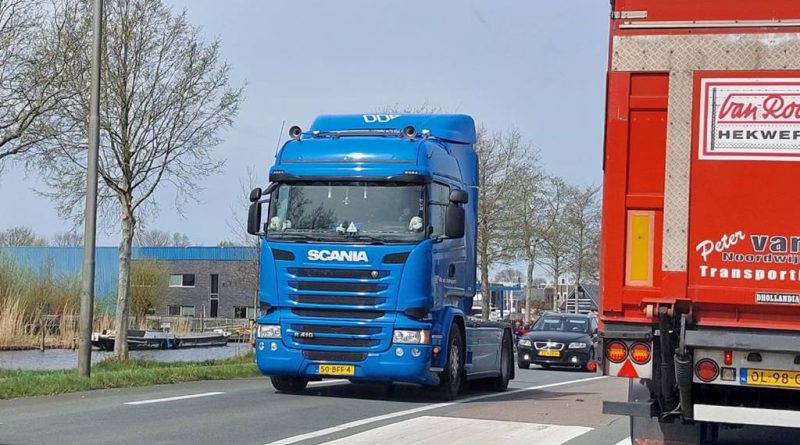European road freight rates Q1 2024: Both spot and contract rates fall
The Upply x Ti x IRU European road freight rates index for Europe shows that Q1 rates fell in both the spot and contract markets. The spot rate index is down 8.2 points year on year. Meanwhile, falls in the contract rates index have slowed, down 1.0 point year on year.
The contract index fell to 127.6 index points in Q1 2024, dropping 2.6 points quarter on quarter (Q-o-Q). The spot index fell to 123.9 points after a more modest 1.1 point fall Q-o-Q. Year on year (Y-o-Y), the spot index is now down 8.2 points, while the contract index is down 1.0 point.
- The Q1 2024 European Road Freight Spot Rate Benchmark Index fell to 123.9 points, 1.1 points lower than in Q4 2023 and 8.2 points down Y-o-Y.
- The Q1 2024 European Road Freight Contract Rate Benchmark Index fell to 127.6, 2.6 points lower than in Q4 2023 and 1.0 point less than in Q1 2023.
- Following CO₂ toll changes in Germany, CO₂-based tolls came into effect in Austria and Hungary in January and the Czech Republic in March, increasing rates in those markets.
- According to companies managing tolls, these changes have resulted in a toll increase of 7.4% (+EUR 0.033/km) in Austria, 40% (+EUR 0.158/km) in Hungary and 13% (+EUR 0.026/km) in the Czech Republic.
- After the continuous falls seen in Q4 2023, diesel prices have been modestly rising since the beginning of the year.
- The outlook for spot rates across Europe suggests reduced rate declines as we enter a more stable demand environment in 2024.
Low demand continues to push spot rates down; however, the magnitude of spot rate declines is decreasing. This may indicate a less negative demand environment that could lead to rate normalisation.
Demand pressure is expected to continue a slight upward trajectory. At 2.4%, the European inflation rate in March was the lowest in 33 months, producing a 0.6 point growth in consumer confidence, according to McKinsey. The more stable demand picture reflected by these indicators has prevented extreme drops in spot rates.
Operating expenses, such as vehicle maintenance, insurance and tyre costs, remain elevated compared to previous years, keeping cost and contract prices high.
Diesel prices have fallen across Europe from their highs last year, easing some supply-side pressure. However, after the continuous falls seen in Q4 2023, diesel prices have been modestly rising since the beginning of the year: average diesel price at the pump was up 3% at the end of Q1 2024 compared to the beginning of January 2024.
– Though road freight rates fell again in Q1 2024, the expectation is that rates will pick up again through 2024. Costs are stubbornly high and we may well be moving into another challenging supply chain period, with indicators suggesting import volumes are recovering and supply chain bottlenecks, which have recently been masked by low volumes, becoming more acute again. That represents a bad combination for capacity which will filter into the road freight market over Q2 and Q3 and is likely to apply upward pressure to rates – said Ti Head of Commercial Development, Michael Clover.
Upply Chief Executive Officer Thomas Larrieu commented that the road transport sector is facing a difficult economic environment.
– Weak demand caused spot and contract rates to fall in the first quarter of 2024, while costs for operators remain high. However, signs of economic recovery are beginning to emerge, with prices already rising on some routes in April 2024. We expect the situation to improve gradually throughout the year – said Larrieu.
Based on Ti data, the forecast for 2024 is a modest growth of 1.1% for the region in terms of road freight revenue market sizing. According to IRU’s latest forecast, EU road transport volume growth in 2024 is expected to improve to 0.4% y-o-y (up from -1.1% in 2023) due to real wage growth (as inflation decelerates) and a strong labour market that will support a rebound in consumption.
The implementation of Directive (EU) 2022/362 amending the Eurovignette Directive is still underway and adding upward pressure on rates (notably in Germany).
Following Germany, the CO₂-based tolls came into force in Austria and Hungary in January 2024, and in Czech Republic in March. According to the companies in charge of toll management in these various countries, it means a toll increase of 7.4% (+EUR 0.033/km) for Austria, 40% (+EUR 0.158/km) for Hungary and 13% (+EUR 0.026/km) for Czech Republic for the classic Euro VI tractor and semi-trailer used in Europe (which transports 63% of Europe’s road freight).
Adjustments to toll rates in the context of the Eurovignette Directive revision are expected in many European countries, starting with Sweden in May 2024 and Denmark next year. The Netherlands and Romania are expected to follow in 2026, and part of Belgium in 2028.
In France, where distance-based tolls are in place under long-term concession contracts granted to private operators, the Directive (EU) 2022/362 will only apply to new and renewed concessions after 24 March 2022, which will take place from 2032. However, a possibility has been foreseen to introduce a rate variation based on the CO₂ performance of vehicles on certain parts of the tolled network (notably highway A35 close to the German border) from 2025 onwards.
IRU Senior Director for Strategy and Development Vincent Erard added that the low demand continues to push down road freight spot rates.
– Contract rates are also decreasing but only marginally due to higher operating costs. New CO₂ tolls are notably adding to costs, rising recently, for example, by 40% in Hungary and 83% in Germany. Increasing CO₂ tolls on existing fleets without having alternative zero-emission vehicles, infrastructure and incentives available for operators is counterproductive. We also need to promote proven efficiency measures for operators, especially SMEs, to accelerate decarbonisation progress – Erard commented.
Source: IRU






